China’s Brewing Tea Revival
By Esha Chaudhuri | December 31, 2018

A traditional tea ceremony.
“…moist with the wealth of the Earth,
blessed with the sweet spirit of Heaven…
Chaste and true like new frost,
pure like the Void,
harmonizing the spirit, blending within,
languidly free, effortlessly Empty.”
Such was the reverence of ancient China’s poets and authors for tea, now the world’s most widely consumed beverage after water. Tea is inextricably intertwined with Chinese history and culture, but China’s national beverage has evolved enormously in the millennia since people first began brewing it.
Rulers bestowed gifts of the most expensive teas on favored ministers, famed potters constructed their finest works in service of its preparation, master artisans dedicated their lives to its production and preparation, and foreign nations waged bloody wars in their thirst for tea. From tea ceremonies to tasting competitions, and dowry gifts of “betrothal tea ” to artists’ gatherings where painters and poets drank tea as a source of inspiration, tea in China has been a symbol of refinement, taste, and the search for perfection. Most regions of China have characteristic varieties, locally grown and prepared, and sometimes associated with specific drinking customs. Indeed, tea was traditionally considered one of the seven necessities of life, along with firewood, rice, oil, salt, soy sauce, and vinegar.
In recent decades, China’s tea industry has experienced strong growth, with nine percent annual increases in consumption and production between 2001 and 2011. However, the birthplace of tea ranks twentieth in the world for per-capita consumption, with only just over a third of the Chinese population considered regular consumers. Globalization, rising wealth, and a youthful population are causing Chinese tea culture to change more quickly today than ever before, both challenging and complicating matters.
Suppression and Revival: Emerging Consumption Trends
Between tea’s golden age and its current revival, however, lay the 1900s, an unlucky century for tea. Max Bohnenkamp, a Harvard lecturer on East Asian languages and civilizations, told the HPR that tea has been associated with specific social settings since the Sung dynasty, such as opera and other entertainment activities. During the 20thhcentury, tea houses and opera houses alike drew ire from nationalist and later communist governments, as they became public gathering places with the potential to harbor debate and dissent. After crackdowns on these venues, tea-drinking decreased. Consumption and popularity further declined in the 1900s as resources were concentrated on grain and rubber production under Mao Zedong.
Today, the evolution of tea culture can be traced to demographic patterns that are altering the country’s consumer base. Gary Sigley, an independent scholar, told the HPR that since China’s opening, “Chinese tea culture [has been] undergoing a massive revival.”
As the World Economic Forum notes, “a two-speed consumer economy is emerging in China,” with consumption among the younger, wealthier generation, born in the 1980s and 1990s, now outpacing purchases among poorer and older demographics. Market reports also characterize young consumers as more “sophisticated” — the young generation is very brand-conscious, and surveys show that they demand brands that are tailored to their unique personalities and project a youthful energy. Wealth is also changing consumption patterns. China has benefitted from annual per capita income growth rates of 11 percent since 2010, and upper-middle class and affluent households account for 55 percent of all consumption. A third emerging trend is the appearance of a modern form of consumerism in China that further stimulates brand-consciousness and drives the demand for health and wellness-related goods to accelerate over the demand for daily necessities. Increased international travel, too, is shaping and diversifying Chinese tastes.
How might these trends affect tea in China? China’s traditional tea industry does little to attract young consumers. There is no dominant or even well-established domestic tea chain in China, and therefore no outlet for brand-consciousness. China’s historic teahouses are independently run small businesses frequented by locals and “older generations who usually smoke and play Mahjong,” Forbes notes, while the higher-spending young generation has learned to expect cosmopolitan standards such as free wifi and trendy decor.
Battle of the Brews
Many of the demographic changes challenging traditional tea consumption have also favored the growth of the coffee industry. The beverage is heavily associated with modern Western culture and has become a status symbol among China’s young and growing middle class. Starbucks has maintained high price levels, despite lower operating costs in China, because a particular strata of consumers are willing to pay. “The more expensive the better,” one research analyst remarked, noting that Chinese consumers place great weight on price as an indicator of value. Starbucks’ exclusivity is part of its attraction.
Coffee is meeting many of the demands of China’s new spenders. The tea market is still ten times larger, but rates of coffee consumption have exploded recently, tripling between 2012 and 2016. Starbucks opened one storefront every four days in 2011. Although the company has somewhat conformed to domestic tastes, offering three varieties of Chinese tea year-round and traditional confections during holidays, its menu remains dominated by espressos and Americanos. Other Western chains, including Nestlé and Costa, have also gained a foothold as China’s coffee demand has grown five times faster than the world average since the turn of the century.
Despite the relative sizes of the current markets, Dunkin’ Donuts Inc. CEO Nigel Travis believes coffee “could eventually surpass tea.” Executives also see potential for China to embrace coffee consumption the way Japan did as it underwent similar middle-class growth in the late 1900s, and, as Starbucks is already proving, feel confident in their ability to shape Chinese palates.
The rivalry can be witnessed not only in urban consumer markets, but on farms too. Pu-erh, in Yunnan province, is one of China’s most famous tea-producing regions. The Pu-erh region’s temperate climate is also well-suited for coffee-growing. Since the Chinese government partnered with international development organizations and Nestlé to introduce coffee trees to poor, remote rural areas thirty years ago, the industry has grownto become the 13th largest in the world.
Adapting to Survive
Some tea-focused businesses have adopted the Starbucks model. Vital Tea, which brands itself as a ‘tea café,’ is one alternative to out-of-fashion tea houses, serving fresh tea, herbal teas, lattes, and carbonated iced tea in a trendy, modern setting, to cater to the young generation. “A growing number of consumers, particularly young people, prefer to gather and chat over tea at exclusive tea shops,” said Neil Wang, China president of international consultancy at Frost and Sullivan.
On the production side, “to better meet the market’s demands, many [Chinese] companies are now developing tea bags, fruit-flavored teas, and instant teas,” modes of preparation formerly eschewed by Chinese consumers, said Wu Xiduan, the former secretary general of the China Tea Marketing Association. Newer and less traditional producers have also managed to draw young customers. One company, currently enjoying 20 percent annual growth, has made tortoise plastron jelly, an ingredient of traditional Chinese medicine, its best-selling product by packaging it “in an aluminum bag, like an energy drink.” “People love something traditional, but with trendy packaging,” the executive director told BBC.
Xingcai Zhang, also known as “Dr. Tea,” is a board member of the World Tea Organization, president of the North American Chinese Tea Organization, and the founder of Mylovetea.com. Through the promotion of tea culture and a tea ceremony he developed, Zhang hopes to get more young people interested in tea. “We have a special tea ceremony called My Love Tea ceremony,” he explained in an interview with the HPR. “You don’t serve yourself, but you serve the person sitting next to you, in a circle. And finally around the circle you get a cup of tea, of love, of joy, and respect. Not old people, not young people, everybody can participate.” The ceremony is non-traditional, but Zhang believes it still captures the spirit of tea while also making it more accessible to a new generation. “For me, that’s the culture we should connote. Not just how you move your hand, so it looks a little better,” he said, referencing very formal, traditional tea-serving methods. “For the real culture, it should be easily understandable.” Still, he added, “a lot of things need to be done to attract the young generation.”
The Soul of Tea
But keeping Chinese tea culture alive involves more than just maintaining consumption levels. Traditionalists might argue that convenience, an increasing demand of modern consumers, is contradictory to tea culture. Tea-drinking was traditionally a meditative act, one to be undertaken slowly and deliberately, but the highest-volume growth in the Chinese economy in recent years has been in “fast-moving consumer goods.” Tea has not been immune. There was a 75 percent increase in the portion of households that consumed ready-to-drink tea between 2007 and 2017, making these homes the rule instead of the exception. Such a trend contradicts the emphasis on the pursuit of beauty and patience involved in traditional tea preparation, and one famous poet’s observationthat “tea is drunk to forget the din of the world.” With the rise of ready-made teas and increased use of other time-savers, like tea bags, in China, it appears that tea drinking is simply becoming another noise in that cacophony.
Western influences on consumers and producers also compete with traditional culture. Recent years have seen an increased demand for British tea blends, and U.K. tea sales to China doubled in the first half of 2016 compared to the same period in 2015. A handful of British-style tea houses have also begun appearing in China’s major cities following a wider fascination with British culture, cultivated partly through the popularity of British television shows.
The health-and-wellness trend could also challenge traditional appreciation of and respect for tea. An old Chinese proverb advises that “drinking a daily cup of tea will surely starve the apothecary,” yet health was only one of the four pursuits that tea-drinking was valued for. Chinese consumers have become increasingly health-oriented, however. “The health trend is growing strongly across Asia,” one consultant remarked, and health teas “also chime well with the particularly Asian view of healthcare as being centered around prevention, rather than cure.”
Zhang thinks health is one of tea’s major attractions for the young generation. “A lot of people right now know we have air pollution, stuff like that, and [they know] a lot of health benefits of tea,” Zhang told the HPR. “This is the stuff that attracts young people.”
The increasing use of tea as a luxury commodity among China’s affluent also helps maintain the growth of tea production. The new upper class has embraced tea in the same way that Western elites have typically used wine,, as a way to “flaunt wealth and invest savings,” as a means of social advancement, to impress friends, or as a formal gift, with wealthy Chinese competing to find rarer teas with higher price tags. Such practices finance a market for high-quality teas that sometimes require labor-intensive and delicate processing.
Pu-erh tea, especially, is at the center of the high-end tea industry, and has been a target of commodity investing. Some varieties of Pu-erh undergo slight fermentation during processing, which changes and enhances their flavors but also means that their values rise as they age. According to Sigley, dry cakes of Pu-erh tea, perhaps branded with a company logo, might be distributed as favors at corporate events. Tea is such a popular gift between colleagues and even government officials that it became a focus of Xi Jinping’s anti-corruption campaign in 2013. “In government offices, they were no longer [allowed] to set up specialized tea stations or engage in the gift-giving of tea,” Sigley said.
Tea makers are still disdainful of the wealth and status-conscious practices of the younger, richer generation. “More and more people have so much money to spend, but they do not understand tea,” one tea shop owner complained. “They want to impress their friends, so instead of offering a creamy, flowery Tieguanyin [an Oolong tea] to friends, they will say ‘I have a 200-dollar-a-pound Tieguanyin.” Another connoisseur, the maker of an extremely rare and highly-valued Pu-erh tea, agreed: “Of course. This is China. People buy tea for face, not for its flavors.”
Zhang also remarked on the lack of modern understanding of tea in a spiritual sense. “In China, there are two ways of expressing tea,” he told the HPR. “One is the routine way, just [as] a drink.” Zhang has promoted tea-drinking in many forms. In his capacity as a researcher (he has a PhD in nanomedicine), Zhang has sought to broaden the base of scientific evidence for the health benefits of tea. He has no disdain for tea consumption in this form. But the second way, to appreciate tea in a spiritual sense, as ancient Chinese artists might have, “is the natural way,” Zhang told the HPR. The way tea was meant to be drunk. “We are losing our culture,” Dr. Tea added. “A lot of people go to tea [ceremonies] and they still don’t understand the sense of tea.”
The Old and the New
Ironically, this ultimate commodification of tea has helped fuel its cultural revival in the countryside. Rising prices enabled the economic revitalization of traditional tea-growing communities, and with it, a reinvention of tea culture, Sigley told the HPR. “Without the money from such people, nobody would take [the] time to make teas like this,” said a Pu-erh tea-maker. “With a market for expensive teas, people like me can devote their lives to tasting the finest tea in China.”
The Bulang people of Yunnan province, believed by some scholars to be the first cultivators of tea, have long honored a tea deity, Aleng pa, and “in the last decade or so … Bulang villages and towns have rediscovered this entity, and have recreated rituals and festivals associated with venerating this figure,” Sigley said. This revival has been supported by local governments as a potential draw for cultural tourism. “All across China in the traditional tea-growing areas, local authorities and local chambers of commerce have worked together to establish tea expos [and] to revitalize festivals associated with tea. So tea culture is incorporated into what we would refer to as the contemporary Chinese cultural industries.”
Sigley also noted a trend of rising interest in formal tea presentation and tasting, driven by more established tea houses. Tea expos, tastings, trainings (on how to brew and present tea) and competitions have multiplied in recent years. Zhang remarked on an increase in the number of young people pursuing jobs as trained tea artists. “Tea tourism is one of the new things that [attracts] young people,” Zhang told the HPR.
In part due to such developments, Dr. Tea is optimistic about the future of his beloved beverage. “That culture, the culture we lost, can be recovered by us, and taken to a new point,” Zhang said, adding that “the revival of Chinese tea culture will not just come out [of] China,” but that globalization and cultural exchange would play a role, as it has in the past. “We [will] gain tea culture back,” he predicted, “but in a way that is more inclusive.”
And maybe the changes occurring now are simply another chapter in tea’s long history. “I think it’s normal,” Zhang said of the recent changes in China’s tea culture, recalling the evolution of tea-drinking practice from the exclusive consumption of green tea, over a millennium ago, to the six different categories that exist today. As author Joseph Uhlwrites, “tea’s complex history changes every time someone drinks a new tea, drinks tea for the first time, drinks a tea and experiences an epiphany or feels a deeper understanding about himself, [or] gifts a canister of tea to a friend.”
This piece was edited to correct the position of an interview subject. Gary Sigley is an independent scholar, not a professor at Luoyang Normal University.
Image Credit: Unsplash/ORIENTO
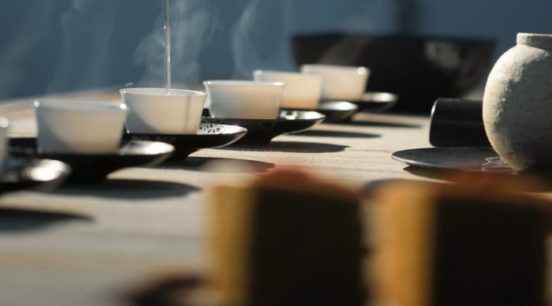
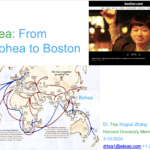
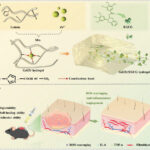
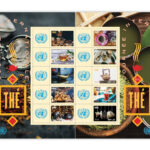
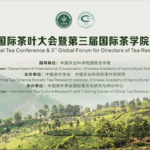
Comments by wteao
Prof. Shen Dongmei`s New Book on Tea
Rajiv Rochan---“ambassador of tea” of India in China, India Director ...